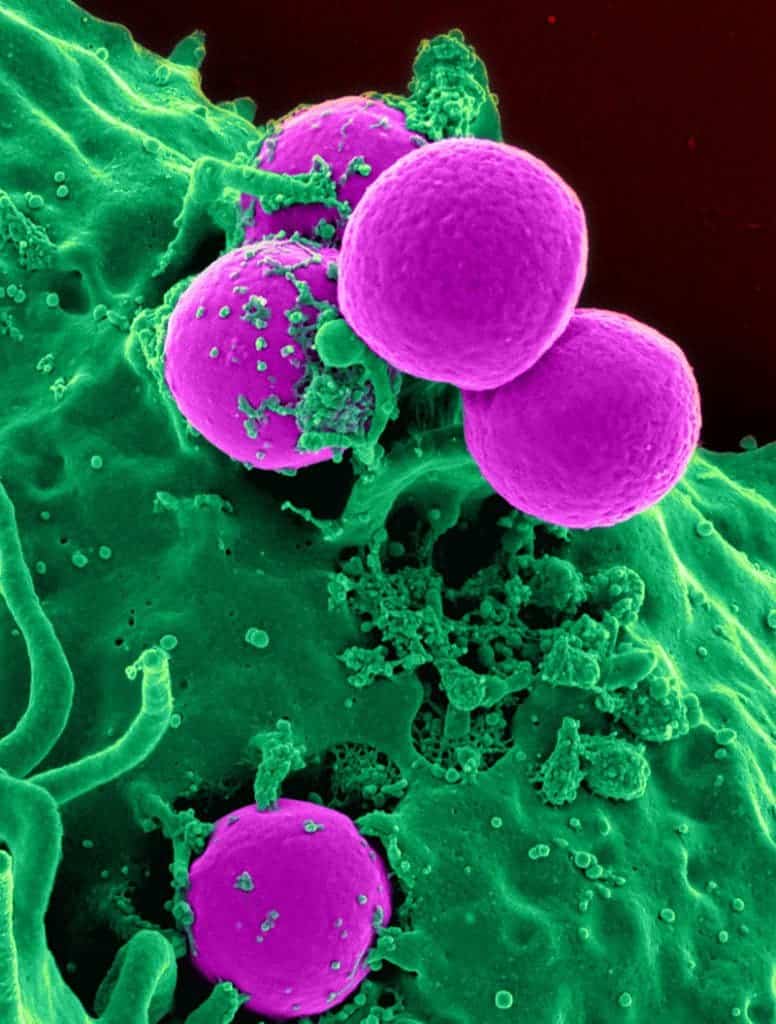A research team has demonstrated the effectiveness of a 3-antibiotic cocktail that kills methicillin-resistant Staphylococcus aureus, or MRSA, in all mice that were treated with it.
MRSA is a bacterium responsible for several difficult-to-treat infections in humans. MRSA is especially threatening in hospitals, prisons and nursing homes, where patients with open wounds or invasive devices generally have weakened immune systems and are at a much greater risk of infection.
The research team has been working with antibiotics that are ineffective against specific pathogens that have evolved to resist them; the three antibiotics they used are meropenem, piperacillin and tazobactam, although practically, they can be considered two drugs, since piperacillin and tazobactam together make up Zosyn. Although these antibiotics are strong injectables, they have no effect on MRSA individually – but together, they work.
“This three-drug combination appears to prevent MRSA from becoming resistant to it,” said Dr. Gautam Dantas, an associate professor of pathology and immunology, in a press release. “We know all bacteria eventually develop resistance to antibiotics, but this trio buys us some time, potentially a significant amount of time.”
They tested the drug combination on 73 different strains of the MRSA microbe, and it worked against all of them, curing the infection. There was also no indication that the bacterium was developing resistance to the drugs.
The results were so promising that the team are looking to test the cocktail in humans as soon as possible.
“MRSA infections kill 11,000 people each year in the United States, and the pathogen is considered one of the world’s worst drug-resistant microbes,” said principal investigator Gautam Dantas, PhD, an associate professor of pathology and immunology. “Using the drug combination to treat people has the potential to begin quickly because all three antibiotics are approved by the FDA.”
The study is published in Nature: Chemical Biology.










